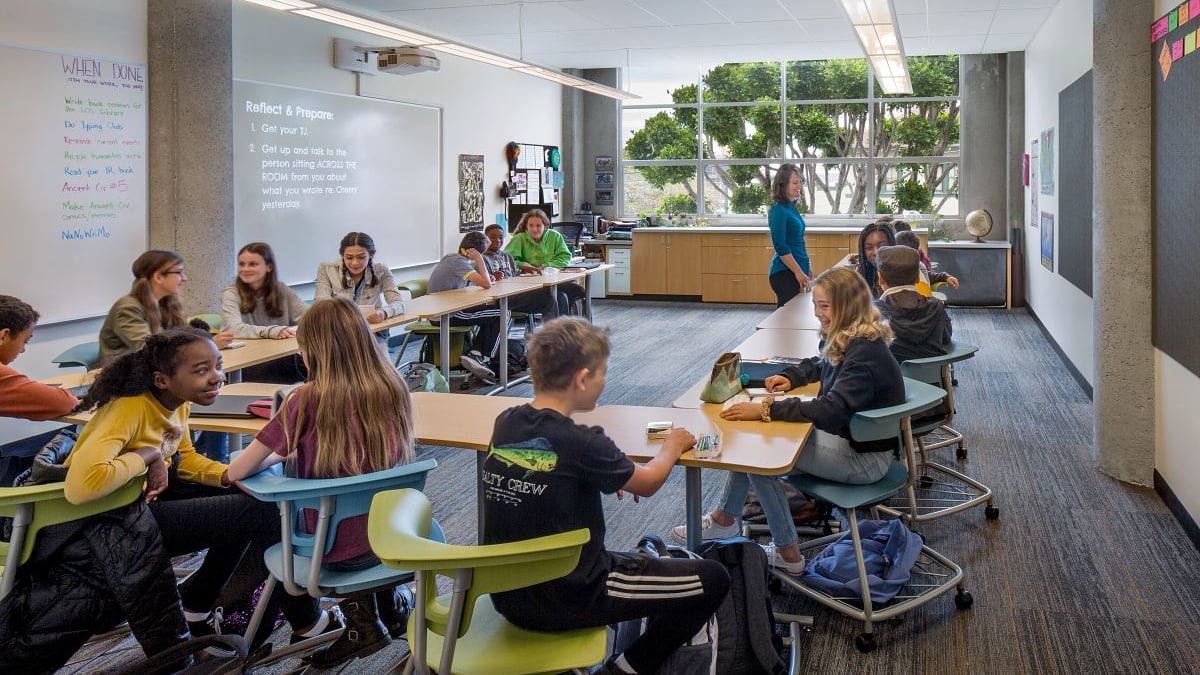Here are five actionable strategies school districts can use after a bond measure is denied, including stakeholder engagement, funding alternatives, and design planning support from KI.
A denied school bond can feel like a setback—but it’s far from the end of your vision. In fact, many school districts use bond denial as a catalyst for reflection, refinement, and renewed support.
Whether you're seeking better learning environments, safer buildings, or modernized facilities, how you respond post-denial can influence future success.
At KI, we’ve helped hundreds of districts rework and rebound from bond denials. Here are five proven strategies to help your team regroup and come back stronger.
1. Analyze the “Why” Behind the Bond Denial
Before you move forward, look back. Voter feedback, community forums, and ballot data often reveal valuable insights. Was the bond proposal too complex or costly? Were communication efforts too limited or unclear? Did the community feel underrepresented in the planning process?
What you can do:
- Break down voting data: Compare precinct-level results to identify where support lagged. Were some neighborhoods more opposed? Use this to guide targeted outreach.
- Hold post-election forums: Give community members a chance to voice concerns in a constructive setting. Document and categorize their feedback.
- Interview internal stakeholders: Ask school staff and board members what concerns they heard that weren’t addressed during the campaign.
How KI can help:
Our team can facilitate post-vote debriefs, evaluate bond messaging, and assess design proposals to ensure alignment with community values. We’ll help you identify what resonated—and what didn’t.

2. Engage Your Stakeholders Early and Often
A successful bond initiative starts with meaningful collaboration. Parents, teachers, administrators, and students should all feel ownership of the vision. If your bond didn’t pass, it may be time to expand or refine your stakeholder engagement strategy.
What you can do:
- Build a stakeholder map: Identify influencers inside and outside the school system—PTA leaders, principals, respected alumni, local businesses.
- Create an advisory committee: Involve stakeholders in the design and communication process from the start. Give them ownership.
- Personalize outreach: Equip principals and teachers with talking points and visuals they can use in their own networks to build grassroots support.
How KI can help:
With a deep library of case studies and research, we equip you with real-world examples that resonate. We’ll even support presentations at school board meetings and public forums to strengthen your community narrative.

3. Reassess & Reframe Your Proposal
Sometimes a bond proposal is sound, but the timing, scope, or messaging misses the mark. Consider scaling back the project, phasing it over time, or reframing it in terms of student well-being, safety, or equity. Highlight the urgent needs and long-term benefits in language that connects emotionally and logically.
What you can do:
- Audit your proposal for scale and clarity: Was the bond too big to pass in one vote? Could it be split into phases or prioritized differently?
- Use comparative benchmarking: Show how your district’s facility conditions or learning environments compare to peers or neighboring districts.
- Shift messaging from cost to value: Instead of focusing on what you’re buying, emphasize what outcomes the investment will create—safety, academic success, mental well-being.
How KI can help:
We offer no-cost space planning, visual renderings, and messaging support to help bring your updated vision to life. When you’re ready to resubmit, we’ll make sure your design story is compelling and community-centered.

4. Explore Alternative or Supplemental Funding
Even if your bond was denied, all progress doesn’t need to stop. Look into grants, public-private partnerships, or phased implementation funded through operating budgets. Sometimes small wins today lay the groundwork for larger victories tomorrow.
What you can do:
- Evaluate capital improvement budgets: Are there smaller pieces of your plan that could be accomplished without bond funding?
- Review financing options: Many banks offer public entities municipal financing opportunities that can allow larger projects to be absorbed into operating budgets .
- Pursue community partnerships: Collaborate with local businesses or foundations that may help co-fund pilot spaces or specialized areas.
How KI can help:
We work with districts to identify phased purchasing strategies that align with budget constraints. Our wide range of purchasing contracts also enables compliant, faster purchasing—without rebidding or administrative delay.

5. Plan Ahead—Because Change Is Inevitable
Education is evolving fast. Even without bond funding, schools must adapt to shifts in pedagogy, enrollment, and technology. Use this time to plan for flexible, future-ready learning environments that can be deployed incrementally.
What you can do:
- Build a long-term capital plan: Even if a bond failed, a 5- to 10-year roadmap helps secure future funding and maintain momentum.
- Design flexibly: Prioritize furniture and spaces that can evolve with enrollment shifts, curriculum changes, or pedagogical shifts.
- Keep the public informed: Don’t disappear after a “no.” Continue sharing updates on smaller improvements and future vision.
How KI can help:
Our design consultants can help you build a phased, flexible master plan that aligns with long-term goals; and our education and contracts team can support with finding alternate funding routes. KI will ensure your vision remains clear—even if it unfolds over multiple years or funding cycles.

Most Importantly: Stay Visible, Stay the Course
A bond denial can be disheartening, but it’s also an opportunity to show your community resilience and resolve. Districts that stay engaged and transparent often earn stronger support the next time around.
Use newsletters, social media, and school events to keep momentum alive. Celebrate incremental wins—whether it’s a new learning pilot, stakeholder collaboration, or simply revisiting your design vision. Most importantly, continue communicating the "why" behind your goals: better environments, greater equity, and a brighter future for every learner.
At KI, we believe your vision is worth pursuing—and we’re here to help make it real.




